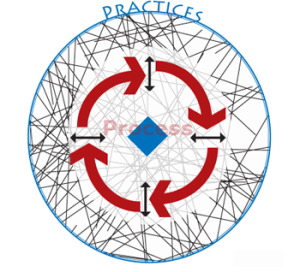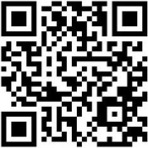 We know that most learning in the workplace is informal. Most observers put it at around 80%. Recently, John Hagel and John Seeley Brown contended that “as much as two-thirds of headcount time in major enterprise functions like marketing, manufacturing and supply chain management is spent on exception handling.” Of course, that fact is a result of the successes of process automation over the past few decades. Yet, still, The Barely Repeatable Process (BRP) persists as an organizational challenge for business.
We know that most learning in the workplace is informal. Most observers put it at around 80%. Recently, John Hagel and John Seeley Brown contended that “as much as two-thirds of headcount time in major enterprise functions like marketing, manufacturing and supply chain management is spent on exception handling.” Of course, that fact is a result of the successes of process automation over the past few decades. Yet, still, The Barely Repeatable Process (BRP) persists as an organizational challenge for business.
Earlier discussions here focused on the importance of exceptions, to business process and formal learning. I examined the implications of the Kirkpatrick Evaluation model to the use of social media in learning experience design, while addressing the challenges facing learning leaders. Leading the Business-Centered Learning Experience noted that evaluating formal learning is as much about organizational learning and change management as it is about individual learning, largely because much of the learning, and performance, that matters today occurs at the group level. Marc Rosenberg recently echoed the point in an article in Learning Solutions Magazine, The Special Sauce of Social Learning. Marc noted that social learning is largely a change management challenge for organizations.
The most basic point to remember is that exceptions to formal business processes require efforts to design a scalable learning architecture that supports content co-creation needed to adapt to emergent challenges and manage the flow of that adaptation through an enterprise’s ecosystem. Whether judging an adaptation successful requires it to result in new formal learning content, i.e. content co-creation, or a new business process, i.e. organizational innovation, or both, remains an open question.
Echoing John Hagel, John Seeley Brown, and Lang Davison’s focus on The Big Shift, Tim Young recently noted the following about social networking and exception handling,
When an exception happens, we have to step away from our PowerPoint, stop typing an email, or exit a meeting in order to take care of it. Routine work stops. And, our modern reliance on technology to find, aggregate, and alert us to these exceptions has made the task of managing them more burdensome than ever before. Systems that manage exceptions provide the enterprise with vast amounts of data points that have become overwhelming for employees to handle. The applications that we rely on for managing exceptions still rely on process owners to make decisions and respond to the issues. The result is a workforce that isn’t dealing with exceptions well at all. (my emphasis)
The importance of social networking to increasing the effective handling of exceptions is a major focus for those interested in social learning.



 Posted by Larry Irons
Posted by Larry Irons  What do you think the typical manager might say if you told them their employees don’t gossip and engage one another enough in social interaction at work?
What do you think the typical manager might say if you told them their employees don’t gossip and engage one another enough in social interaction at work?  The emergence of social media provides people inside and outside organizations with a way to actively
The emergence of social media provides people inside and outside organizations with a way to actively 
 As a
As a 
 The eLearning industry is taking a step into
The eLearning industry is taking a step into 












